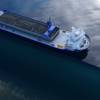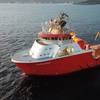May 17, 1999
This Customs Service document proposes to amend the Customs Regulations to provide for the temporary landing in the U.S. of vessel equipment in need of repair, without requiring entry of that equipment under a Temporary Importation Bond (TIB).
It is proposed such equipment be permitted to be landed for repair and relading aboard the same vessel, subject to Customs issuance of a special permit or license for the landed equipment, under an International Carrier Bond. Uncertainty exists whether the relading of repaired equipment on vessels departing the U.S. would satisfy the TIB requirement that such merchandise be exported. The proposed amendments will eliminate this uncertainty while still allowing Customs adequate control over such unladings and ladings.
June 14, 1999
The USCG amends the Regulated Navigation Area (RNA) within the navigable waters of the First USCG District with respect to the provisions governing the positive control of barges. The Interim Rule allows the COTP to authorize exemptions to the positive control provisions established in the Final Rule that became effective on January 29, 1999, and also reopens the docket for further comments on the positive control provisions and the effect of this Interim Rule on those provisions. The Interim Rule provides additional opportunities for small businesses affected by the RNA both to carry on their businesses and to submit comments on the impact of the RNA. The Interim Rule also allows the USCG an additional opportunity to analyze the impact of the RNA on small business entities.
June 21, 1999
This advance notice of proposed rulemaking (ANPRM) solicits comments on the merits of revising the current incident reporting requirements of the Hazardous Materials Regulations and the Hazardous Materials Incident Report Form (DOT Form F 5800.1). The Federal hazardous materials transportation law requires the Secretary of Transportation to maintain a facility and technical staff sufficient to maintain a central reporting system to develop a statistical compilation on casualties and conduct reviews on hazardous materials transportation. Any changes resulting from this rulemaking are intended to increase the usefulness of data collected for risk analysis and management by government and industry and, where possible, provide relief from regulatory requirements.
June 21, 1999
The USCG is proposing regulations that would require response plans for certain tank vessels operating on the navigable waters of the U.S. that could reasonably be expected to cause substantial or significant and significant harm to the environment by discharging a hazardous substance. These regulations are mandated by OPA 90, which requires the President to issue regulations requiring the preparation of hazardous substance response plans. The primary purpose of requiring response plans is to minimize the impact of a discharge of hazardous substances into the navigable waters of the U.S.
October 1, 1999
The Research and Special Programs Administration (RSPA) is amending the Hazardous Materials Regulations (HMR) to maintain alignment with international standards by incorporating numerous changes to proper shipping names, hazard classes, packing groups, special provisions, packaging authorizations, air transport quantity limitations and vessel stowage requirements.
In addition, RSPA is making other amendments to the HMR, including eliminating the "Keep Away From Food" label for poisonous materials in Division 6.1, Packing Group III. Because of the recent changes to the International Maritime Dangerous Goods Code, the International Civil Aviation Organization's Technical Instructions for the Safe Transport of Dangerous Goods by Air, and the United Nations Recommendations on the Transport of Dangerous Goods, these revisions are necessary to facilitate the transport of hazardous materials in international commerce.
July 3, 2001
The USCG is changing the date by which solid-color crossing dayboards in the Western Rivers Marking System will be replaced with checkered non-lateral dayboards used in the U.S. Aids to Navigation System. This change is necessary to allow additional time to test and evaluate a redesigned crossing dayboard with reduced reflectivity.
Editor's Note: This information is courtesy of the Transportation Institute On-Line (http://www.transinst.org/)
Featured videos

Unlock Onboard Data Efficiencies

Inmarsat Enhances Service to Drive Digitalization

Tracking Foreign Vessels Working in the U.S. Jones Act Market
Subscribe for
Maritime Reporter E-News
Maritime Reporter E-News is the maritime industry's largest circulation and most authoritative ENews Service, delivered to your Email five times per week









